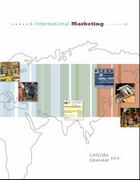
Give d.etailed explanations to the following questions.
Question 1 (40 pts) Consider the following model of a vertical market. In a market for a good, there exists a monop- olist manufacturer with a marginal cost of 5 who charges a wholesale price of par to a monopolist retailer. The retailer's only marginal cost if the manufacturer price; however, the retailer must pay a fixed cost F in order to sell the manufacturer's goods. (For example, he must remodel parts of his store.) The retailer charges a price to consumers of p.. Demand is linear with p, = 15 - Q a. Write down the retailer's profit function b. What is the price the retailer charges as a function of pm? c. Write down the manufacturer's profit function as a function of po. What is the optimal pur set by the wholesaler? d. Given p., what is the retailer's profit? At what level of F will the retailer no longer be willing to purchase from the manufacturer? e. Consider the vertically integrated monopolist. At what level of F will the vertically inte- grated monopolist no longer be willing to stock the good in his retail division? At what values of F will the manufacturer carry the good if and only if it is vertically integrated with the retailer?Let p, denote the value at time / (measured in years) of a European put option on a non-dividend-paying stock with price S,. The option matures at time 7 and has a strike price K. The continuously compounded risk-free rate of interest is r. (i) Derive a lower bound for p, in terms of S, and K. [4] Consider a market with the following two non-dividend-paying stocks: Stock Volatility Current price S1 10% f10 S2 20% $10 The following options are available on those stocks: Derivative Underlying Strike Time to Current asset price expiry price (a) European call option S1 (2.50 (b) European call option S2 $2.26 (C) European put option $1.55 (d) European put option S f12 f1.20 e) American put option S f12 f1.13 The continuously compounded risk-free rate is 3% per annum. (ii) Identify, with reasons, five discrepancies in these option prices. [5]Q1. Understand some Important Issues (1) Suppose the true model is given by y=+xl+2x2+8 while you estimate (a wrong model below) y=o30 +1611": +3 Answer the following questions: :1. Demonstrate the OLE estimate of F3: is inconsistent in general. Explain in which special situations. it can be still consistent. b. What is the implication of the issue on your future research? (2) Explain p-value when you conduct a Hat and F-test. [Note that a p-value is closely related to your null hypothesis! If you change your null hypothesis, then the phvalue will be different too! In addition, for any thot'hesz's testing, we can calculate its p-value! Think of why empirical analysts prefer to report p-values in their mports or papers] (3) In your own research, if you have the issue of (conditional) hetemskedasticity in your regression, what would you be worried about the estimated parameters andfor your inferences? Explain your answer in details. Two countries, Home and Foreign, both able to produce two goods: cloth and tablet computers. The production of both goods uses capital and labor in fixed proportions, with the tablets industry using more capital per worker than the cloth industry. The units of each input needed to produce one unit output are given by: capital labor cloth 2 tablets 2 Both countries have 150 units of capital available for production, but the Home country has 100 units of labor whereas the Foreign country has 200. Consumers like to consume both goods and have the same preferences in both countries. Assume that the countries are closed to international trade. a) Construct the PPF for both countries and put them in the same graph. Show in the graph the quantity of both cloth and tablets that are produced by each country in equilibrium, if the countries are not trading. Compute these quantities algebraically. b) Which country produces more cloth relative to tablets? Indicate how this feature relates to the country's relative factor endowments. c) Compute the quantities of labor and capital employed in each country in the production of each of the goods at the output levels in a). d) Indicate the range of prices of cloth relative to tablets at which the Home country will produce both goods. Which good would be produced if the relative price was outside of this range? e) In which country will the price of cloth relative to tablets be higher? Explain. f) Assume that both countries open to trade with each other. Explain how the price of cloth relative to trade will change in each country after opening to trade.3.5 ** Consider the generalized externality problem. Assume the damage and cost functions are given by E- C(E) = E - a 2 D(E, v) = v- 2 - YEv. a. B. y> 0. (a) Determine the non-regulated level of E if the polluter has the right to pollute. (b) Determine the level of E under the polluter-pays principle. (c) Determine the efficient solution. (d) Determine the payoffs for both parties under no regulation and the polluter-pays principle for a=1, B=2 and y=3. Assume now there are transaction costs of Tr=1/240. (e) Which contract will the household suggest to the polluter if the polluter has the right to pollute and the household has to pay the transaction costs? What are the final payoffs to both parties? (f) What will be different if the polluter has to bear the transaction costs? (g) Which contract would the polluter suggest to the household if the household has the right to a clean environment and polluter has to pay the transaction costs? What are the final payoffs to both parties












